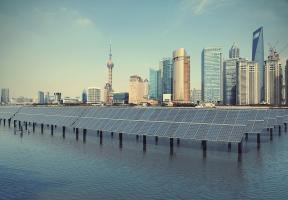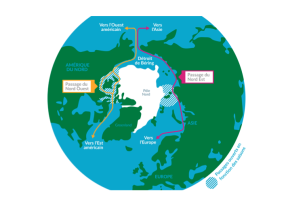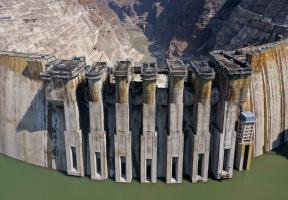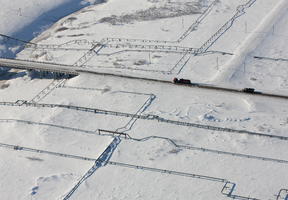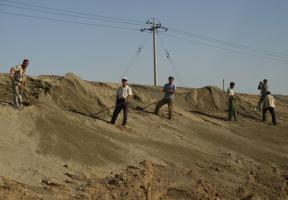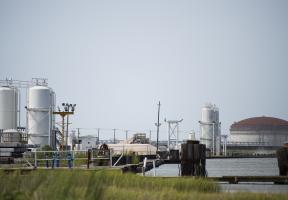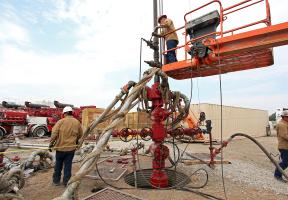Carbon Capture
10 min read
Carbon capture and storage (CCS) is a concept that could be applied to industries that emit the most carbon dioxide (CO2) in facilities such as -, gas- and -oil-fired plants, steel, petrochemical and cement plants and oil refineries.
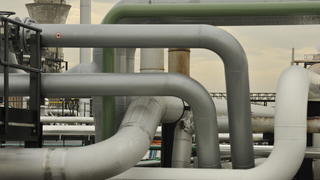
© DUFOUR MARCO - TotalEnergies - Carbon capture and storage involves isolating CO2 and transporting it to an underground storage site, usually via a gas pipeline.
Step 1: Isolate the CO2
In many cases, CO2 emissions from human activities are the result of burning fossil fuels. While there are several solutions for isolating carbon dioxide, they are often costly or require modifications in a plant’s installations.
Because carbon dioxide is not the sole component of flue gas, it must first be separated from the rest of the mixture. This is relatively easy in the case of steam but less so with nitrogen, which constitutes a large percentage of the atmosphere (around 80%). Separating carbon dioxide from nitrogen is also energy - and cost-intensive. The estimates that this stage alone accounts for two-thirds of the total cost of CCS.
However tempting as it might be to suggest bypassing this stage altogether and storing all exhaust fumes, CO2 only accounts for 3 to 5% of flue gas on average. As a result, not separating the carbon dioxide would mean transporting and storing large quantities of gas, which in turn would have a major impact on the size of the transportation infrastructure and storage capacities needed.
There are currently three ways to capture CO2:
- Post-combustion capture
Post-combustion capture is currently the most effectively managed technique. It uses a liquid chemical solvent to absorb the CO2 from the combustion flue gas, forming a CO2 -rich mixture that is then separated from the rest of the gas. Thermal treatment then separates the CO2 from the solvent, which can in turn be regenerated and used to absorb more CO2. The advantage of post-combustion capture is that it can be applied to existing plants with only minor modifications.
- Pre-combustion capture
Pre-combustion capture involves removing carbon dioxide before the fuel is burnt. This is done by transforming the fuel into a synthesis gas (or syngas) made up of (CO) and (H). Steam is then added to the syngas causing a reaction that converts the carbon monoxide into CO2 and produces additional hydrogen. Next, the CO2 is separated from the hydrogen using a solvent and then captured, leaving the hydrogen to be used to produce energy without carbon emissions. This technology is already used on an industrial scale. However, it requires specific equipment to be incorporated into the industrial plant from the design phase.
- Oxy-fuel combustion
Conventional combustion techniques use air, which generates large amounts of flue gas with extremely diluted concentrations of CO2. With oxy-fuel combustion, fossil fuels are burnt using pure oxygen. The resulting flue gas mainly consists of CO2 and water vapor, which can be easily separated. The first step, then, is to separate the oxygen from the other components of the air, mainly nitrogen.
All three techniques have either reached commercial stage or are being tested in pilot plants to prepare for industrial-scale deployment. However, they are also all still costly and extremely energy intensive.
New Methods on the Horizon
Other methods are still in the research phase. Some use membranes that separate the CO2 from the other elements by sieving out unwanted molecules. Another more advanced method known as chemical looping combustion (CLC) uses two interconnected reactors. Air and a metal powder are introduced into the first reactor. The metal oxidizes in the presence of the air before being transferred to the second reactor, where coal or gas is introduced as fuel. The fuel then consumes the oxygen from the metal oxide and transforms it into an easily separable mixture of CO2 and water vapor. Lastly, the deoxidized powder is reintroduced back into the first reactor, completing the loop. Once isolated, the CO2 must be transported to the storage or processing site.


